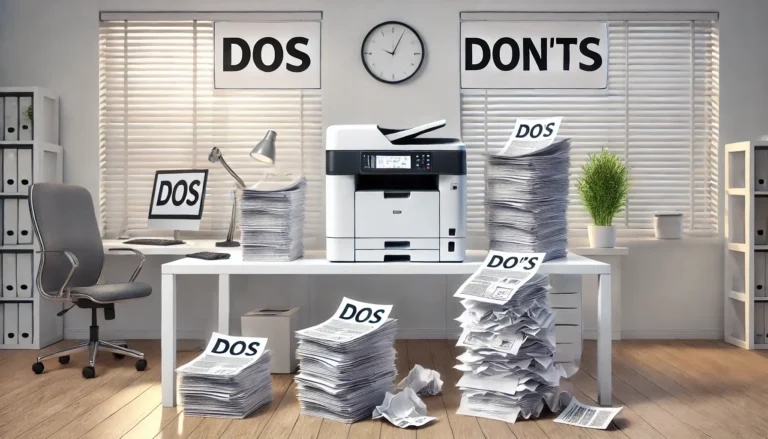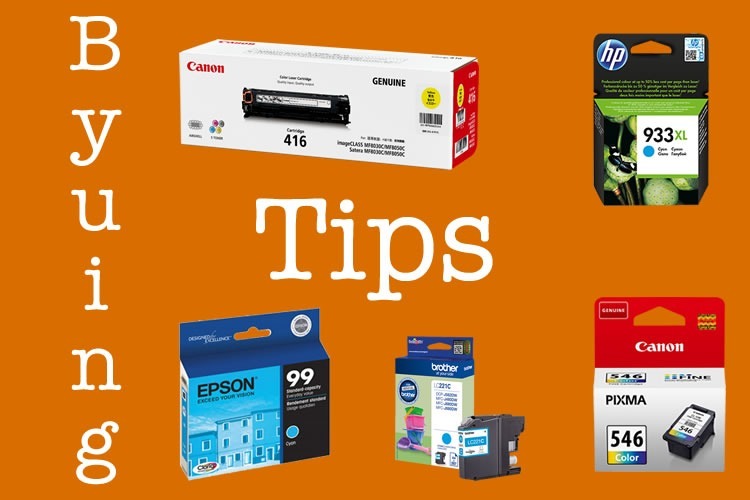Environmentalism is a major concern in the modern world. Most printing manufacturers operate an array of policies to protect the environment, such as making their printers more energy efficient and operating cartridge and hardware recycling programs.
But they can’t influence the way that you use their printers. That’s something that’s entirely in your control. Your printing practices can have a serious effect on the environment. Moreover, bad practices can cost you money in extra toner, ink, and paper.
You need to know the printing best practices that will make you as efficient as possible. Here are seven of them.
Best Practice #1 – Only Print When Necessary
It’s easy to fall into the habit of printing every single document that we think may be important. For example, you may receive a report at work. Instead of reading it on your computer screen, you print it out so you can read it physically.
There’s an important question to ask in this situation: Is printing such a document completely necessary?
In cases like this, the answer may well be “no”. You could read the report just as well on your computer, which means you didn’t need the printout. With modern cloud computing technology, you can even download the report onto a mobile device so you have it with you anywhere that you go.
If you print only when necessary you cut down your usage. The benefits of this include less paper use, longer toner and ink cartridge life, and a longer lifespan for your printing hardware.
Best Practice #2 – Preview Before Printing
Let’s assume that you do need to print the document. You send it to the printer and wait for several pages to print out. Then, you take the document back to your desk so that you can read it through.
Did you spot the mistake there?
Proofreading after printing is another poor practice. If you spot a mistake in your printed document, you’re going to have to edit the document and reprint it. This wastes both paper and ink, as well as using more energy because you’re using the printer more often.
Instead, proofread everything before you send it to the printer. Have somebody else check the document too, if possible. You may have missed something, especially in a long document that contains thousands of words.
Once you’re satisfied with the proofread, preview the document. Most software packages offer you the option to preview before sending a document to the printer.
This will allow you to see exactly how it will look when it’s printed out. You’ll spot any formatting errors, which saves unnecessary printing jobs.
Best Practice #3 – Only Print the Pages You Need From a Document
If you’re printing from a multi-page document, it’s tempting to just hit the “Print All” button and let the printer get to work. However, in some cases, you won’t need every single page from the document. If you print all of it out, you’re less efficient than you should be.
Most word processors and software packages allow you to choose the pages that you want to print beforehand. Check the preview and specify the pages that you need. It’s a little thing, but it goes a long way to saving ink and paper.
Best Practice #4 – Turn Your Printer Off Properly
This is a problem that affects a lot of offices. You’ve finished up after a long day of work and you just want to get out of the building. Instead of turning your printer off manually, you unplug it from the mains and go about your day.
This presents two problems.
Firstly, most modern printers use fairly complex mechanisms. Taking away the power without allowing the printer to prepare itself for shutting down can cause mechanical issues. Over time, these issues could cost you more in maintenance than you should have to pay.
Secondly, switching a printer off at the mains means you don’t allow the printer to reset its cartridges. Most printers place caps on your ink cartridges and toner when they’re not in operation. This prevents ink from drying up and becoming unusable.
However, you must turn the printer off properly for it to do this. That’s because the cartridges will stay in their “work” position if you suddenly unplug the printer. This will thus result in wasted ink and could hamper the quality of your prints.
Best Practice #5 – Only Use Color When Necessary
As a general rule, color cartridges cost more than black and white cartridges. Printing in color is often a waste of ink, especially when you’re printing documents for your own use. Unless you’re specifically looking to see how the colors look on paper, it’s usually best to print in black and white.
There’s an added wrinkle to this. If you leave both cartridges active while printing in black and white, many printers will use a little from the color cartridge to complete the job. This means you could end up using ink from a color cartridge when you don’t need to.
As a result, it’s best to deactivate the color cartridge entirely until you actually need it. Refer to your printer’s user manual to find out how to do this.
Best Practice #6 – Use Electronic Distribution
With email and the cloud, there’s often no need for you to print a document off. You can send it directly to the person who needs it electronically. This saves on paper and ink, plus it cuts down on your energy usage.
Only print when the person who needs to document requires a physical copy.
Moreover, sending a document electronically allows the recipient to edit the electronic copy. This is particularly useful when working with somebody on creating a report. If each of you prints the report out and sends it back to the other for repeated rounds of editing, you end up using potentially dozens of sheets of paper that you didn’t need to use.
Best Practice #7 – Proper Paper Loading
Paper jams can cause major problems for your printer. They clog up the mechanisms and can lead to mechanical issues that require maintenance.
The best way to avoid them is to adhere to proper paper loading practices. Do not load any crumpled paper or paper with folds into the printer. These types of sheets can’t run through the printer’s rollers smoothly and are much more likely to jam. Moreover, make sure every piece of paper is loaded in straight, so the printer can draw it in with no problems.
Also, don’t load any paper that has been exposed to water. Water-weakened paper can tear while going through the printer, plus there’s a possibility that any remaining moisture may find its way into the printer.
As a side-note, this doesn’t mean that you should avoid using recycled paper or reusing paper. As long as the sheets are in good condition, they shouldn’t cause any paper jams.
The Final Word
If you stick to these seven best practices, you’ll achieve the following:
- You’ll use less ink or toner, which means you don’t have to buy as many cartridges.
- You ensure the printer runs into fewer mechanical problems.
- Your energy bill falls because you’re not using the printer as much.
- You’ll save paper, which saves money and the environment.
Of course, you’ll still run out of ink and toner eventually, even when sticking to these best practices. Come to us when that happens. Check our catalog to find the printing accessories that you need for your make and model of printer.


